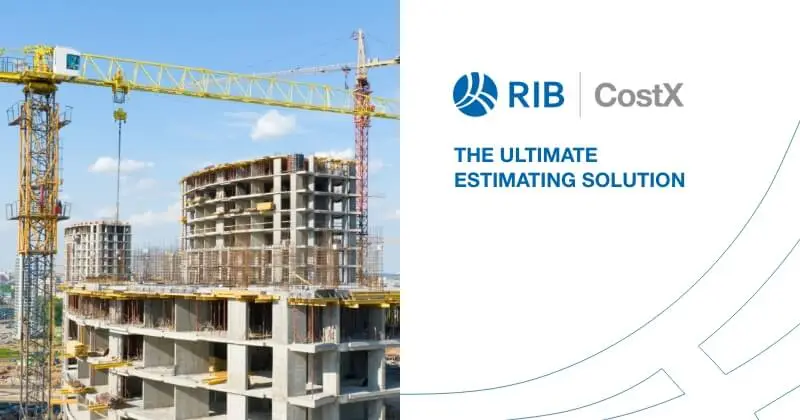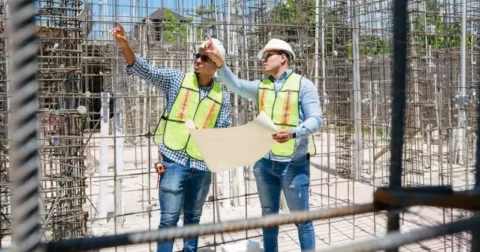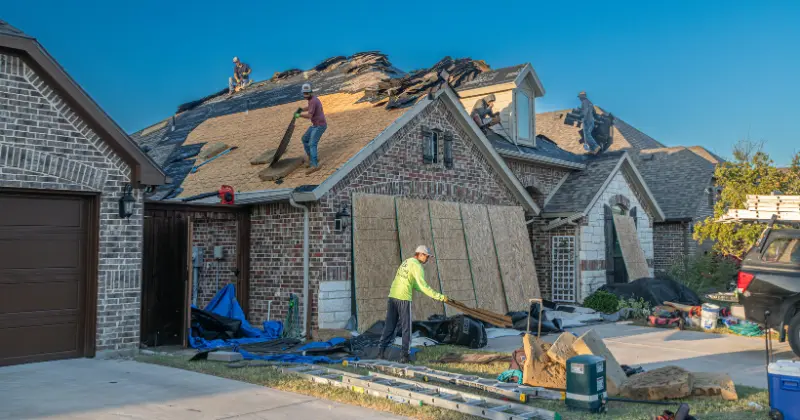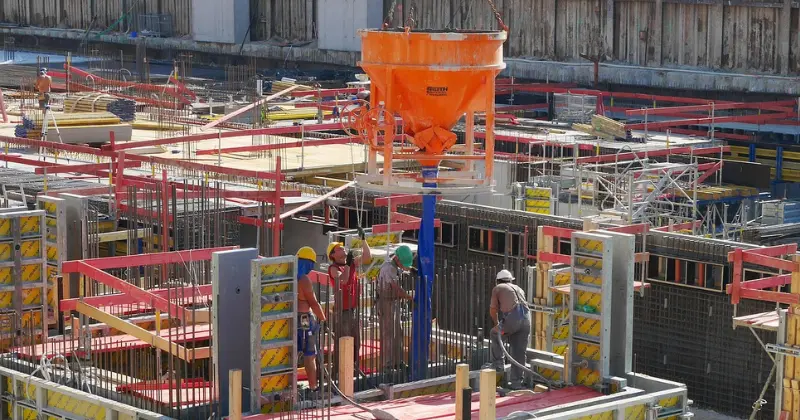10 mins read
Understanding Construction Submittals Definitions and Best Practices

The term ‘submittal’ refers to the act of providing something for consideration, feedback, or approval. In the construction industry, submittals have become a valuable tool for ensuring the inputs from designers align with the outputs from suppliers, contractors, subcontractors, and others responsible for completing important tasks.
In this blog post, we review the definition and significance of submittals, provide examples of common submittal types and formats, and examine some useful tips and best practices that keep the process flowing smoothly.
What Is a Construction Submittal?
A construction submittal is any document or object the general contractor and other stakeholders must provide before project work begins. All required construction submittals are captured in a detailed list known as the submittal item registry.
Submittals in construction help to ensure the quality of the materials, products, and equipment used are satisfactory and meet the requirements laid out by construction architects and engineers. Approval of the initial set of submittals governs when work can start. The submittal process continues throughout the life of the project and encompasses changes, corrections, and new additions.
Submittals in construction vs. RFIs?
We discussed what submittals are in construction projects. But how do they differ from a request for information (RFI)? An RFI is like a construction submittal since both processes are used to request and verify information, but the two practices serve different purposes. RFIs are used by contractors to request clarification from designers and engineers on details like drawing notes, materials, and specifications. In contrast, submittals are used to request and deliver evidence that these clearly defined requirements will be met.
These processes combine to minimize confusion, improve stakeholder collaboration and decision-making, and streamline the submittal approval processes. Both RFIs and submittals are typically defined in the general requirements section of a construction contract.
Who is involved in the submittal process?
Many participants are involved in the submittal process, but the general contractor or construction manager is typically the central player. The lead contractor forms a bridge between design teams establishing and refining requirements and contractors and subcontractors submitting information, drawings, or samples to demonstrate compliance. The person or firm taking this lead role is also responsible for construction submittal tracking, as approvals are requested, and corrections are made.
Architects also play a key role by reviewing samples of items like flooring, siding, and tile to ensure they align with the project vision. Design engineers are called upon to participate in reviews related to technical details such as drawings, contractor calculations, or material performance characteristics.
Types of Construction Submittals

Blueprints, product samples, and cut sheets are among the common types of construction submittals. The formats and requirements are tailored to the type of information being captured. For example, the color and texture of hardwood flooring are best demonstrated through a physical sample. In contrast, the dimensions and layout of a structural beam might be communicated through detailed shop drawings. The established submittal categories include:
Drawings and diagrams
Construction drawings and diagrams can convey information on everything from floorplans and elevations to siding and cabinetry. Contractors follow standard drawing formats to share important details and help reviewers understand how a task will be completed or detect gaps in understanding that must be addressed. CAD software tools make it easier to create useful drawings and diagrams quickly and transfer drawing information electronically.
Product data
Product data sheets, or cut sheets, include specifications on products, services, or equipment utilized during a construction project. Along with information on size, weight, and materials, cut sheets might also include installation guidelines, visual aids, and schematics. Standard product data sheet formats have been developed for common applications like electrical wiring and air conditioning installation.
Product samples
Samples are an unconventional yet extremely descriptive option to demonstrate the quality and tactile feel of important construction materials in a way that drawings or data sheets cannot replicate. Physical samples of important aesthetic elements, including tile, paint, trim, and carpeting, provide all the information designers need to decide whether the finished product will meet their expectations.
Mockups
A mockup is a construction submittal format that expands upon the usefulness of product samples by demonstrating how individual components will appear and work together as a completed system. Mockups can be constructed for facades, structural details, or even entire building rooms. Detailed models are sometimes built to a smaller scale (1:2, 1:5, etc.) so they can be transported for review and approval more easily.
Compliance certifications
Many of the requirements passed along to contractors and subcontractors through construction submittals, such as fire resistance, energy efficiency, and structural performance, are satisfied through external compliance certifications. These certifications are less subjective than self-assessment methods that rely on individual interpretation since they are issued by accredited third parties following established industry standards.
Safety
The importance of safety management in construction can never be overstated, with more than 150,000 accidents occurring worldwide each year. Along with safety data sheets and evidence of personal protective equipment (PPE) selection and training, contractors might also be asked to provide evidence for emergency response plans, safety policies, and risk management plans as part of the construction submittal process.
Construction Submittals Process Explained
Each contractor, client, or designer has their own preferences. Still, the submittal process typically follows a standard flow that begins with the general contractor creating a submittal item registry. Once the basic list has been created, the general contractor will disperse construction submittals to the appropriate parties for completion.
Acting as the hub of the wheel, the general contractor manages the process of routing submittals from third parties to the design team for approval. If a submittal is approved, work can begin on that project task. If a submittal is rejected or changes are requested, the process must be repeated until satisfactory evidence or documentation is submitted.
Tips to Generate Successful Construction Submittals

The construction submittal process is essential since any delays can hold up the entire project. A combination of software technology, proactive communication, and standard industry practices can keep submittals from becoming a bottleneck.
1. Standardize submittal requirements
Construction submittals vary significantly depending on the task. Still, standardized forms and cover sheets accompany the evidence, which makes it easier to document the scope, responsible parties, relevant specifications, attachments, and approval status. Even when submittals take the form of physical models or samples, capturing this basic information in a standardized format simplifies the process for all stakeholders while making tracking status in a submittal log easier.
2. Electronic submittal tracking
Construction submittal tracking can become a complex and time-consuming process for projects with thousands of discrete tasks to manage. Creating a submittal log to capture status in real-time and ensure nothing is overlooked is a recommended best practice for projects of all types and sizes. An electronic submittal log also allows items to be grouped and sorted by category so that information can be retrieved and reported more easily. Implementing a robust construction reporting system is paramount to visualize your data and track progress in real-time.
3. Use professional construction management software
Spreadsheets and other basic computer tools can add a measure of organization and control to the submittal tracking process, but purpose-built, cloud-based construction software tools make it easier to collaborate with stakeholders, link to external project files and databases, and streamline review processes. Advanced software tools also offer automated workflows to standardize process steps and minimize errors.
4. Create a submittal schedule
Creating a comprehensive submittal log also provides an opportunity to improve tracking and performance by generating a submittal schedule. After weighing the timing and importance of each task against the complexity of the submittal, a well-planned schedule allows the general contractor to prioritize the most important items. For example, a relatively straightforward paint color approval can be deprioritized based on both the simplicity of the submittal and the (later) due date of the task.
5. Collaborate with key stakeholders
The pivotal role played by the general contractor or construction manager in requesting information to support submittals while communicating with subcontractors, designers, and clients underscores the importance of collaboration. The existence of an intermediary to direct traffic can potentially lead to confusion or delay progress. Digital construction collaboration software helps to eliminate these communication lags by keeping all stakeholders on the same page.
Conclusion
Construction submittals have quickly evolved from manual, paper-based records to more sophisticated systems incorporating digital tools to improve information sharing and efficiency. The integrated portfolio of RIB software solutions streamlines key project tasks and deliverables by enhancing efficiency and productivity. Our takeoff and estimating software, RIB CostX, offers unmatched levels of accuracy to ensure submittals are created considering precise quantities of labor, materials and other resources. A digital environment to access and share documentation ensures a flow of information to handle submittals successfully.
Join the thousands of companies who benefit from powerful estimating and project management technology, and get your free demo of RIB CostX today!

Most Recent
10 mins read
11 mins read
11 mins read
10 mins read
Blog Categories

Ebook











